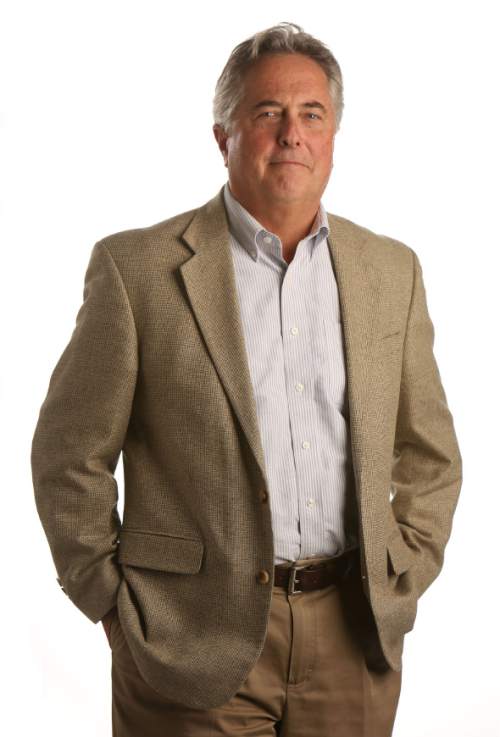This is an archived article that was published on sltrib.com in 2015, and information in the article may be outdated. It is provided only for personal research purposes and may not be reprinted.
When Edward Snowden realized the extent of the data the United States government was collecting on its citizens, he took his discovery to journalists, specifically documentary filmmaker Laura Poitras and columnist Glenn Greenwald, whose work appeared in The Guardian at the time.
The portrait now emerging of Snowden, in the wake of Poitras' Oscar-winning "Citizenfour," is of a thoughtful, careful whistleblower whose conscience weighed heavily as he deliberated how to handle classified information that revealed a U.S. surveillance apparatus run amok. The film's title refers to how Snowden identified himself in his initial, encrypted emails to Poitras.
Like others before him — such as Daniel Ellsberg with the Pentagon Papers — Snowden released his findings to the press, and trusted journalists to do their job in exposing government malfeasance and lack of accountability. Also like Ellsberg, Snowden was charged under the Espionage Act of 1917.
That heroic picture of Snowden was amplified last week as Greenwald took the stage at the University of Utah and gave a riveting account of the revelations, and of the threat to world democracy. Greenwald, speaking extemporaneously and answering questions over the course of an hour, distilled his message to this: In a free society, government is transparent and the activities of the citizens are private. In a tyrannical country, those roles are reversed.
"I would submit, and I don't think it's in dispute," he said, "that we are far closer to the tyrannical model than the free model."
There was a sense of symmetry in seeing Greenwald in Utah. About 20 miles from where he spoke sits the hulking Utah Data Center where, presumably, all that telephone, email and text data of U.S. citizens is stored. Only the government knows for sure what happens at the center, and it isn't talking. Scenes of the facility under construction comprise the opening images in "Citizenfour."
At one point in the evening, a student thanked Greenwald for reviving a sense of "optimism," that it was still possible for wrongs to be exposed, and possibly corrected.
I shared that feeling, but perhaps from a slightly different perspective. What Snowden, Greenwald, Poitras and others reaffirmed is the power of journalism to do the right thing.
Another student asked Greenwald why Snowden didn't simply release the documents in their entirety online, a la WikiLeaks.
Greenwald, a self-described advocate of releasing as much information as possible, answered: The risk to national security and to citizens was too great. The documents contain private information on people who, through no actions of their own, had come under surveillance and suspicion by the U.S. government, a government with no probable cause to collect such data.
It was up to Greenwald et al to make the hard decisions, to pull off the most difficult of balancing acts.
They succeeded. They spoke truth to power, yet minimized harm and protected the privacy of the innocent.
The reporting on Snowden's revelations continues.
More accolades: Work published in The Salt Lake Tribune received national honors in recent weeks. "The Last Leg," the eight-part series on U.S. Army veteran Bryant Jacobs' decision to amputate his leg mangled a decade earlier by a roadside bomb in Iraq, was a finalist in the 2015 Dart Awards. Presented by the Dart Center for Journalism and Trauma at Columbia University, the recognition goes to "outstanding reporting in all media that portrays traumatic events with accuracy, insight and sensitivity while illuminating the effects of violence and tragedy on victims' lives."
"The Last Leg" was written and reported by Matthew D. LaPlante, a former Tribune staffer who covered the military and national security. LaPlante met Jacobs while on the beat, and he and Tribune photographer Scott Sommerdorf chronicled Jacobs' journey for much of 2014. The excellent writing and images are presented in a stunning online presentation by digital producer Amy Lewis.
Sommerdorf was presented with an honorable mention in the National Press Photographers Association's Best of Photojournalism contest for his image of a cedar waxwing gulping a dried berry.
Sommerdorf proved that great photography is often created by a simple awareness of what's happening around you.
"I literally saw these crazy birds feasting on berries through the living room window, and snuck quietly outside with my Nikon and a 7-200mm lens, sat on the milk delivery box on the doorstep, and documented their frenzied eating after the last bits of winter had gone. I was three feet outside my door."
Attracting entries from around the world, this is one of the premiere competitions for photojournalists.
Terry Orme is The Tribune's editor and publisher. Reach him at orme@sltrib.com





